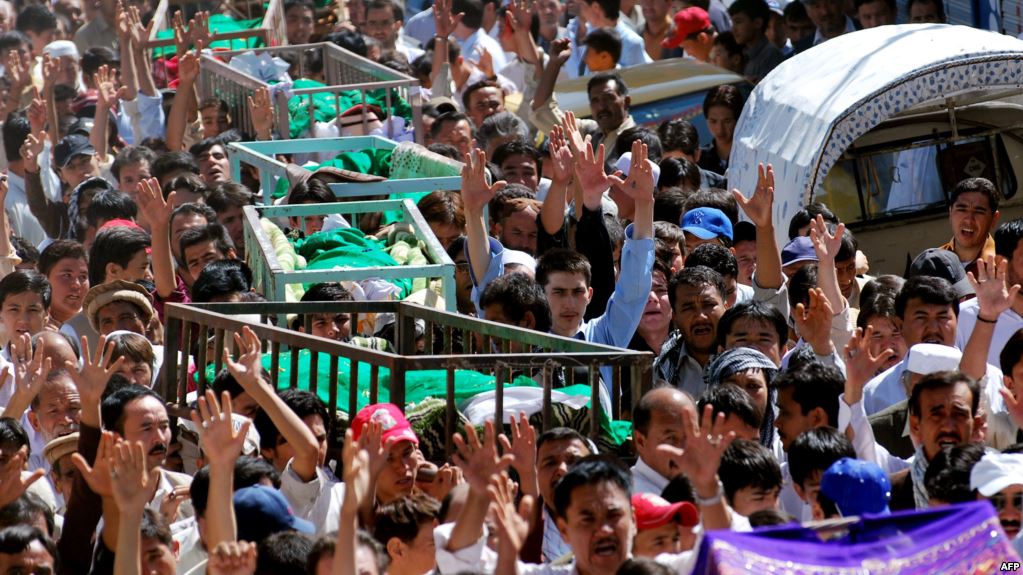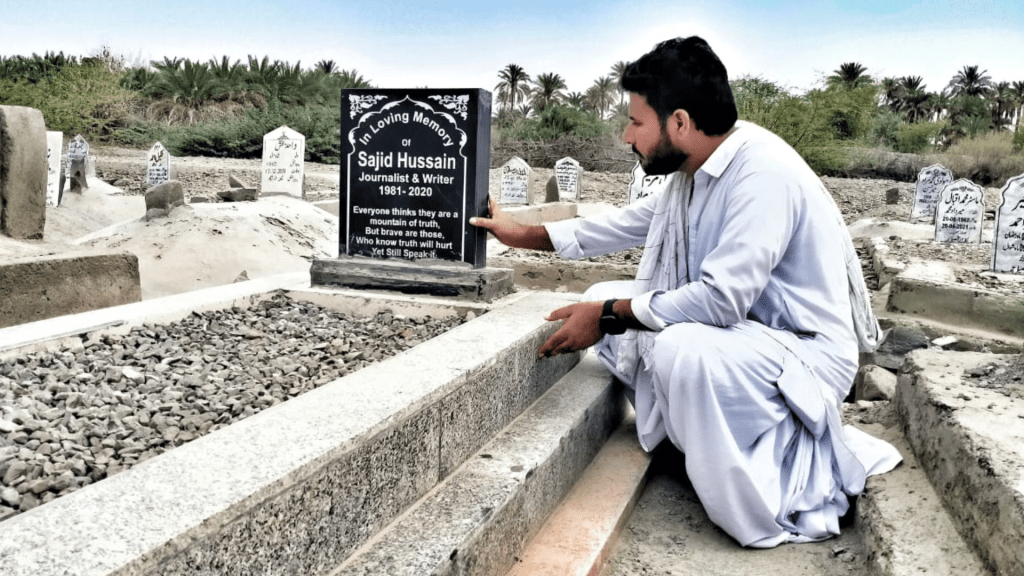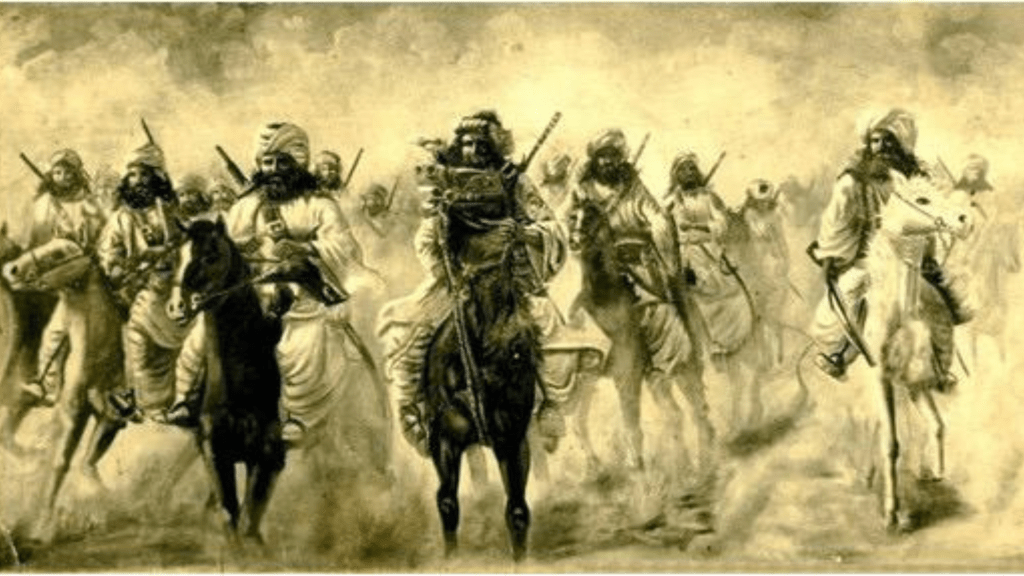Bordering Iran to the west, Afghanistan to the north and laying at the Strait of Hormuz to the south, Balochistan is generally known for its strategic importance, prodigious riches, an ongoing nationalist insurgency, and human rights challenges. Underneath this lies a systematic and diabolic subversion triggered by the military establishment of Pakistan which, as a consequence, is eroding the socio-political foundations of a secular and tolerant Baloch society and giving way to the fundamentalist Islam to take roots. Having been eclipsed by the war on terror in neighboring Afghanistan and northern areas of Pakistan for nearly two decades, the situation in Balochistan not only went largely unnoticed by the world but with a sophisticatedly controlled media, it also remains the least comprehended in Pakistan.
If remained unchecked, the impact of this shortsighted policy of the ruling establishment of Pakistan would be disastrous not only for the whole region in the coming decades but also this poses a danger with impacts on international peace.
Baloch secularism
Baloch scholar Jan Muhammad Dashti observes that Baloch society is governed by a definite set of conventions and codes of cultural ethics guiding its members in their religious, economic and socio-political affairs (Janmahmad, 1982). Anthropologist and historian Dashti (2012), pointed out that the social makeup and cultural values of secularism and religious tolerance which are forming the bases of a Baloch’s individual and national identity were established during the period from 12th to 16th centuries and were shaped by a coinciding pastoral ecology and tribal structure. According to Janmahmad, (1982), Baloch (1987) and Redaelli (2003), the majority of the Baloch consider themselves as Muslims, however, their attitude towards religion as compared to their neighboring nationalities is tolerant and secular. Not a single instance in their history of three millennia has been documented of politicization of religious faith, except the deplorable military ventures of Mir Naseer Khan I to forcibly convert Zikris (a renegade Islamic sect among the Baloch) into orthodox Sunni Muslims (Naseer, 1979; Dashti, 2012). Many factors have been cited for the development of a tolerant Baloch mindset, including the encroachments in their social life and subjugating measures by various regional powers in the name of religion. However, as observed by Grare (2013), it appears that this secular behavior is fading away in the face of constant manipulation by the security establishment of Pakistan.
In recent decades, the state establishment in its bid to dilute if not fully dry down the socio-cultural pool of the Baloch which contains all the ingredients of resilience, fierce sense of independence, secularism and strongly protective and unwavering love for its cultural values and fatherland, has been following policies of imposing fundamentalist Islam in various ways. This has been thought by the planners in Islamabad to be a necessary strategy in order to neutralize the Baloch national question in Pakistan.
Political Islam in context
The use of Islam in the achievement of some political objectives by the state establishment of Pakistan is the legacy of the colonial era. In the 19th century, during the period of the Great Game, the British conceived the doctrine of ‘Islamic Nationhood’ as a tool to mobilize the Muslim population of Central Asia against a fast encroaching Russia (Axmann, 2012; Dashti, 2012). A number of religious groups and individuals were cultivated by the British to form a religious line of defense against Russia and national liberation struggles in India and the Middle East (Curtis, 2010). Islam as a political tool was considered to be the convenient option. Two British agents, Jamaluddin Afghani, and Syed Ahmed Khan emerged as influential religious personalities. They were at the forefront of preaching the doctrine of Pan-Islamism and “Islamic Nationhood” (Dashti, 2017).
The engineering of political Islam or Islamic nationhood contributed in the partition of India on religious grounds and brought far-reaching consequences on various nations in South-central Asia who — with different historical, lingual and cultural backgrounds — were merged together in the newly-created religious state of Pakistan (Lifschultz, 1983; Dashti, 2017). In the new state, the power was handed over to a state establishment, which was loyal to the interests of its former colonial masters. As a member of Western political and defense alliances (CENTO and SEATO), one of the responsibilities given to the rulers of the state was to use the religious sentiments of the people to create a religious first line of defense against the rising tide of socialism led by the Russians and the Chinese. With Western patronization, the military not only assumed the ruler-ship of the state but also declared itself the ideological guardian of the country (Harrison, 1981; Wirsing, 2008; Grare, 2013; Dashti, 2017). The religion was used as a cohesive force to keep the culturally distinct people together and also as a strong tool to contain the political dissents in Pakistan.
For the last 70 years, the military remains the main source of politico-economic power in the country in general and in Balochistan in particular (Grare, 2006). Opposition against the establishment began to mount with a strenuous participation of progressive Sindhi, Pashtun and Baloch nationalists in the movement who sought democratic reforms (Janmahmad, 1989). Notwithstanding, in Balochistan, the first elected nationalist government of the National Awami Party – which was at the forefront of anti-military rule in Pakistan – was overthrown and Baloch, Sindhi and Pashtun political leaders of the party were branded traitors and sent behind the bars (Lifschultz, 1983). The opposition by the progressive and secular elements of the country was seen as anti-Islamic by the military establishment. Balochistan became one of the core areas of General Zia’s Islamization strategy (Grare, 2013).
Historically the military establishment has never conceded legitimacy to Baloch nationalism by calling the Baloch proxies of anti-Islamic countries and failed to engage Baloch leaders in serious negotiations. Instead, it relied on a military response to the peaceful resistance movement of the Baloch. It resorted to measures outside the constitutional ambits and legal processes of the state. It began implementing one of the most inhumane and multi-faceted assimilating strategies causing in the gradual but general collapse of the socio-political fabric of Baloch society.
Patronizing Islamist militants
Islamization of Balochistan and the lateral entry of sectarianism was part of the strategy to contain or dilute the Baloch national movement. Grare (2006) and Zurutuza (2015) observed that the state establishment encouraged the penetration of Islamist militants in Balochistan to counter the mobilization of Baloch on nationalistic grounds. The chairperson of human rights commission of Pakistan (HRCP) Zohra Yusuf in a BBC interview in 2014 pointed out the rapid and systematic penetration by radical Islamists group, including Lashkar-e-Jhangvi (LeJ) and Ahl Sunnat Wa Jamaat (ASWJ), to counter the secular Baloch insurgency (“Religious Groups”, 2014). Notorious organizations like ISIS and Daesh have begun taking roots in Balochistan in complicity with the military establishment.
These observations can be corroborated by the incident of the earthquake in 2013 in Awaran that was also the hotbed of insurgency in Balochistan at that time. According to Fair, C. Christine and Hamza, Ali (2017), despite enlisted as an international terrorist organization by various international entities including the United Nations and United States, Filah Insaniat Foundation (FIF) an offshoot of Lashkar-e-Taiba (LeT), also operated as Jamaat-ud-Dawa in the past received the exceptional favour of providing relief work under Army’s supervision in Awaran; whereas, neutral organizations such as Médecins Sans Frontières (MSF) were refused entry despite its willingness to offer medical and humanitarian relief.
Within a short span of military’s presence in Awaran, in November 2014, a religious outfit, Lashkar-e-Khurasan, believed to be an offshoot of ISIS, claimed responsibility for murdering six persons from the Zikri sect. Two months before this incident, the said outfit got involved in a bloody clash with the Baloch resistance fighters in Balnigwar area of Kech district, showing a close working relationship with the army units engaged in counter-insurgency operations against the Baloch nationalist forces. (“ISIS in Balochistan”, 2016)
Shrinking space for religious minorities
One of the core strategies of the establishment has been to upset the social harmony, of the Baloch society by intimidation and murder of Hindus, Christians and Shia Hazara of Quetta. The kidnapping for ransom, acts of extortion and murder of Hindus started in 2005 (Miakhel and Siddique, 2017). ISIS in recent years has been involved in a series of deadly attacks on Christians in Quetta (“Murder of Christians”, 2018), the city heavily patrolled by the paramilitary FC (Zulfiqar, 2016). The most brazen victimization has been that of Shia Hazaras with an estimated death of 1,500 in the last decade mostly as a result of attacks by LeJ (Siddiqi, 2015). The attacks on the Hazara community began to take momentum with the beginning of the contemporary Baloch insurgency in Balochistan in 2002. In a very bold rebuttal to the criticism of the international community and national political parties, the Election Commission of Pakistan cleared 150 candidates of ASWJ, an affiliate of LeJ, to run for National Assembly elections held in July 2018 (Hashim, 2018).
Madrassas outstripping schools
The expansion of madrassas (religious seminaries) witnessed a boom in Balochistan under General Musharaf’s regime. As of 2006, the budget of the Ministry of Education for the province was 200 million rupees compared to 1.2 billion rupees allocated to the Ministry of Religious Affairs (Grare, 2006). Ever since the growth of madrassas in Balochistan has greatly increased with the highest enrollment rates in the country (Fair, 2014); however, the enrollment in schools has drastically dropped to the lowest (Alif Ailan, 2018). According to Ministry of Auqaf, the department also dealing with religious education, 13,000 madrassas operate in Balochistan, with highest number of madrassas in Pakistan after Punjab, whereas a report published by AlifAilan (2018) quoted the total number of schools in Balochistan as 13,845. The Secretary of Education termed 963 of the 13,845 schools as non-functional. The sources in the Education Department quoted the numbers of non-functional schools way higher than claimed by the officials (Shah, 2017).
To add insult to injury, school buildings and students have also come under constant attacks by the LeJ and other religious outfits operating in the province. LeJ has also claimed deadly attacks on the only Women University in Quetta, Balochistan (“Pakistan’s heart”, 2014). The splinter group of ISIS known as Al-Furqan threatened schools to stop girls’ education in the district of Panjgur (Shah, 2015).
Most startling is the exponential rise of the Tablighi phenomenon in Balochistan. Tablighis are supposed to be the preacher of Islam. Without any declared sources of income, these Tablighis have established sophisticated organizational structures in the province. However, the claim of the nationalists that Tablighis are involved in drug trafficking cannot be substantiated; nevertheless, it is generally believed that they are being financed by those who are operating illegal drug businesses with open patronage from the establishment.
With systematic and persistent state manipulations, the conventional and defined role of a religious cleric in Baloch society has dramatically transformed to an authoritative social position of settling disputes and guiding people in their social and political affairs. The situation is alarming. As observed by Grare (2006), a breeding ground of religious fanatics falling en-route billions of dollars of drug trade with potentials to generate enough money to sustain military activities can prove lethal not only to regional powers but a Balochistan in the grip of religious fanatics will also put at stake Western interests given to its strategic location.
References:
Alif Ailaan (2018). 2013-2018 Five Years of Education Reforms in Balochistan. Wins, Losses and challenges for 2018-2023. Islamabad: Alif Ailaan.
Axmann, M. (2012). Back to the Future “The Khanate of Kalat and the Genesis of Baluch Nationalism, 1915-1955” Oxford University Press: London.
Baloch, I. (1987). The Problem of ‘Greater Baluchistan’: A Study of Baluch Nationalism, Stuttgart: Steiner Verlag Wiesbaden.
Curtis, M. (2010). Secret Affairs: Britain’s Collusion with Radical Islam. Serpents Tail: London.
Dashti., N. (2017). The Baloch Conflict with Iran and Pakistan. Trafford Publishing: London.
Dashti., N. (2012). The Baloch and Balochistan: A historical account from the Beginning to the fall of the Baloch State. Trafford Publishing: London.
Eleven days after the first of two severe earthquakes hit the Awaran area of Pakistan’s Balochistan province, Doctors Without Borders/Médecins Sans Frontières (MSF) still has not received authorization to work in the affected area, despite daily discussions with the Pakistani government (2013, October 4). DOCTORS WITHOUT BOARDERS. Retrieved from https://www.doctorswithoutborders.org/what-we-do/news-stories/news/pakistan-msf-still-without-authorization-work-earthquake-affected.
Fair, C. Christine (2014). Pakistan’s Internal Security Environment. Available at SSRN: https://ssrn.com/abstract=2475461 http://dx.doi.org/10.2139/ssrn.2475461.
Fair, C. Christine and Hamza, Ali (2017) “Rethinking Baloch Secularism: What the Data Say,” Peace and Conflict Studies: Vol. 24: No. 1, Article 1. Available at: hKp://nsuworks.nova.edu/pcs/vol24/iss1/1
Grare, F. (2013) Balochistan: The state versus the nation. Carnegie papers, Carnegie Endowment for International Peace, South Asia Project, April 2013.
Grare, F. (2006) Pakistan: The Resurgence of Baluch Nationalism. Carnegie papers, Carnegie Endowment for International Peace, South Asia Project, Number 65, January 2006.
Harrison, S.S., (1981). In Afghanistan’s shadow: Baluch nationalism and Soviet temptations. Carnegie Endowment for International Peace.
Hashim, A. (2018, July 15). Quetta Hazaras despair as religious supremacists contest
election: Members of minority say authorities gave clean slate to leader blamed
for hundreds dead. ALJAZEERA, FEATURE/PAKISTAN ELECTIONS 2018.
Retrieved from https://www.aljazeera.com/indepth/features/quetta-hazaras-
despair-religious-supremacists-contest-election-180712222735530.html.
ISIS in Balochistan and role of Pakistani state in fostering extremism (2016, October 19). Baloch National Movement. Retrieved from https://www.thebnm.org/single-post/2016/10/09/ISIS-in-Balochistan-and-role-of-Pakistani-state-in-fostering-extremism.
Janmahmad (1989). Essays on Baloch national struggle in Pakistan : emergence, dimensions, repercurssions. Quetta, Balochistan: Gosha-e-Adab.
Janmahmad (1982). The Baloch cultural heritage. Karachi, Sindh: Royal Book Co.
Lifschultz, L., (1983). Independent Baluchistan? Ataullah Mengal’s ‘Declaration of Independence’. Economic and Political Weekly, (18:19/21), pp 735-737+739+741+743-745+747+749+751-752.
Miakhel, B. and Siddique, A (2017, February 2017). Minority Sikhs, Hindus Flee Pakistan’s Restive Balochistan. Gandhara. Retrieved from https://gandhara.rferl.org/a/pakistan-sikh-hindus-balochistan/28317151.html.
Naseer, M. G. K. (1979). Tarikh e Balochistan (in Urdu) Quetta: Kalat Publishers.
Pakistan’s heart of darkness: Quetta (2014, April 23). DAWN, Pakistan. Retrieved from https://www.dawn.com/news/1042132/pakistans-heart-of-darkness-quetta.
Redaelli, R.and Fioran, V. P. (2003). Baluchistan: terra incognita: a new methodological approach combining archaeological, historical, anthropological and architectural studies. Oxford: Archaeopress: Hadrian Books: London.
Space being created for religious groups in Balochistan (2014, October 12). BBC URDU. Retrieved from https://www.bbc.com/urdu/multimedia/2014/10/141012_balochistan_extremism_hrreport_nj
Shah, S. A (2017, March 29). 963 schools in Balochistan not functional. DAWN,
Pakistan. Retrieved from https://www.dawn.com/news/1323394.
Shah, S. A (2015, May 15). Private schools in Panjgur closed after threats. DAWN, Pakistan. Retrieved from https://www.dawn.com/news/1106527.
Siddiqi. F, (2015, Jun 18). Sectarian Violence in Balochistan. Middle East Institute. Retrieved from http://www.mei.edu/content/map/sectarian-violence-balochistan-siddiqi.
Zurutuza K. (2014, Feb 5). A black hole for media in Balochistan: Journalists face major difficulties in reporting from Pakistan’s troubled southwestern province. ALJAZEERA. Retrieved from https://www.aljazeera.com/indepth/features/2014/02/black-hole-media-balochistan-2014238128156825.html.
Zulfiqar, S. (2016, September 25). The many lawmen in Balochistan. TNS. Retrieved
from http://tns.thenews.com.pk/many-lawmen-balochistan/#.W6iH62gzbIV
Murder of Christians: WHILE the level of extremist violence in the rest of
Pakistan has fallen sharply over the past couple of years, Balochistan has seen no
real reprieve (2018, April 04). DAWN, Archive. Retrieved from
https://www.dawn.com/news/ 1399492.
Qambar Malik Baloch is a UK-based writer hailing from Balochistan. He writes on various socio-political issues facing the Baloch and Balochistan. He was the ex-chairperson of the Baloch Students Action Committee, BUITEMS, and the Baloch Students and Youth Association, UK.



